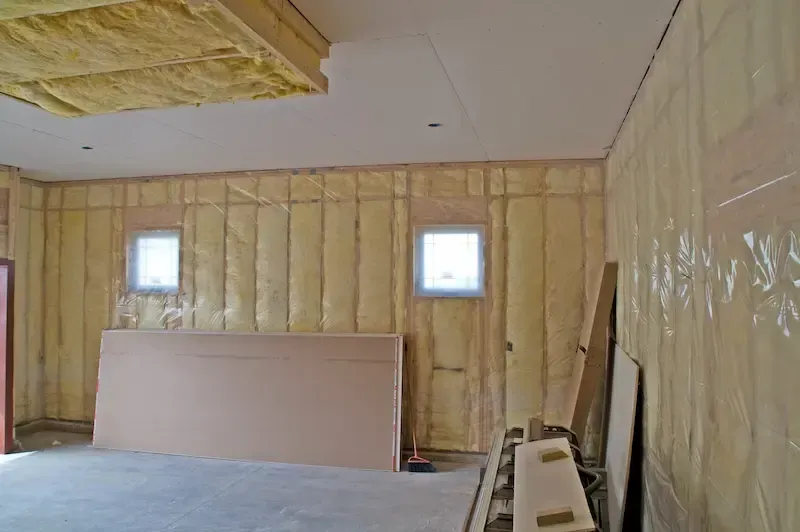Reduce Your Energy Bills with Wall Insulation in Chicago
When you live in a city with chilly winters and steamy summers, it’s easy to assume that high energy bills come with the territory. But you might be surprised—upgrading the wall insulation in your Chicago home is one of the simplest, most effective ways to lower your energy costs. Learn how insulation works, how to tell if you need it, and which types might be best for you.

What’s the Purpose of Wall Insulation?
Wall insulation reduces heat transfer to maintain a steadier indoor temperature. It turns your home into a thermos in the winter, helping heat stay inside, and a cooler in the summer, keeping heat from getting in. Boosting your home’s thermal performance with insulation reduces the strain on your heating and cooling system. As a result, you have lower energy costs and better comfort year-round.
If your home is older, the walls might be under-insulated by today’s standards. The existing insulation may also have settled, rendering it ineffective. Adding quality wall insulation lowers your energy bills by up to 15%, eventually paying you back for your investment.
Signs Your Home Needs Better Wall Insulation
Not sure if your Chicago home needs more insulation? Here are some signs:
- Drafty rooms: If you feel drafts even with the windows and doors closed, your walls might be letting heat escape.
- Temperature fluctuations: Are north-facing rooms significantly colder than south-facing ones? That’s a red flag for weak insulation.
- High energy bills: Many people blame fuel prices for rising energy costs, but an inefficient home could also be a factor.
- Chilly walls: Place your hand on the wall in the winter. Does it feel cold to the touch? Properly insulated walls should feel closer to room temperature.
Types of Wall Insulation
Not all wall insulation is the same. Different types suit different needs, and some are better for retrofits than others. Here’s a quick guide:
- Cellulose insulation is best for retrofits and new construction. Made from recycled paper treated with fire retardants, cellulose is blown into place. It’s a favorite for retrofits because it can fill existing cavities through a small hole drilled in the wall.
- Fiberglass insulation is suitable for retrofits and new construction, depending on what form it takes. Fiberglass batts and rolls fit snugly between wall joists in new construction projects, while the blown-in form can be added to existing walls without extensive renovations.
- Spray foam insulation is best for new builds and major remodels. It expands to fill any opening, making it great for thermal performance. It forms a tight seal that blocks air leaks and adds rigidity to walls. Consider it for your new build or a home remodel that involves tearing down and putting up new walls.
- Rigid foam insulation is also reserved for new builds and major remodels. These boards are highly effective but must be installed on open walls.
Why Choose Titanium Insulation?
The Titanium Insulation team knows what a difference proper insulation can make. We’re one of Chicagoland’s most trusted insulation providers, chosen by your friends and neighbors for our hard work, dedication, and expertise. Our team of industry veterans treats every home with respect, care, and cleanliness while working to meet or exceed city regulations. If you’re ready to cut down on energy bills, contact us for a free wall insulation estimate today.





